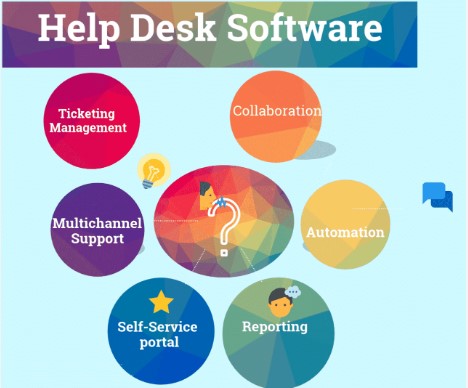Unraveling the Intricacies of Money Laundering Software

Money laundering, the clandestine process of disguising the origins of illicit funds, has evolved hand in hand with advancements in technology.
In the digital age, criminals leverage sophisticated tools and techniques to obfuscate the trail of illegal money, making it increasingly challenging for law enforcement agencies to combat financial crimes.
One of the pivotal instruments in the arsenal of money launderers is money laundering software, a covert tool designed to launder money efficiently while minimizing the risk of detection.
Understanding Money Laundering Software
Money laundering software encompasses a range of digital tools and platforms tailored to facilitate the laundering of illicit proceeds through complex financial transactions. These software solutions often operate within the shadows of the dark web, where anonymity and encryption protocols cloak the identities and activities of users.
Functionality and Features
Money laundering software offers a myriad of features aimed at concealing the origins and destinations of illicit funds. Some of the key functionalities include:
Transaction Splitting
Money laundering software often automates the process of splitting large transactions into smaller, less conspicuous amounts. By dividing funds across multiple transactions, the software mitigates the risk of triggering scrutiny from financial institutions and regulatory authorities.
Layering
Layering, the process of conducting a series of complex financial transactions to obscure the audit trail, lies at the heart of money laundering schemes. Money laundering software orchestrates intricate webs of transactions across diverse financial instruments and jurisdictions, making it arduous for investigators to trace the flow of illicit funds.
Integration with Cryptocurrencies
The proliferation of cryptocurrencies has provided money launderers with a fertile ground for obscuring the origins of illicit funds. Money laundering software often integrates with cryptocurrency exchanges and tumblers, allowing criminals to convert tainted funds into untraceable digital assets and back again, further obfuscating the paper trail.
The Dark Underbelly of Money Laundering Software
Despite the cloak of anonymity that money laundering software affords its users, law enforcement agencies and regulatory bodies have made significant strides in combatting this insidious threat.
From deploying sophisticated algorithms to track suspicious transactions to collaborating with international partners to dismantle criminal networks, authorities are waging an increasingly sophisticated war against financial crime.
Regulatory Scrutiny
In response to the escalating threat posed by money laundering software, governments around the world have implemented stringent regulatory frameworks aimed at enhancing transparency and accountability within the financial sector.
The Financial Action Task Force (FATF), an intergovernmental body tasked with combating money laundering and terrorist financing, has issued comprehensive guidelines and recommendations to bolster the anti-money laundering (AML) efforts of member countries.
Know Your Customer (KYC) Requirements
Financial institutions and virtual asset service providers are mandated to adhere to robust KYC protocols, requiring them to verify the identities of their customers and monitor their transactions for suspicious activity. These measures serve as a critical bulwark against the illicit use of money laundering software and other nefarious tools.
Technological Countermeasures
In tandem with regulatory initiatives, technology plays a pivotal role in the fight against money laundering software. From advanced data analytics to machine learning algorithms, financial institutions and regulatory agencies harness cutting-edge technologies to detect and disrupt illicit financial flows.
Blockchain Analysis
The immutable nature of blockchain technology offers a double-edged sword in the battle against money laundering. While cryptocurrencies provide a degree of anonymity, blockchain analysis tools enable investigators to trace transactions back to their source, unraveling the intricate webs of illicit activity woven by money launderers.
Artificial Intelligence and Machine Learning
The advent of artificial intelligence and machine learning has revolutionized the field of financial crime detection. By analyzing vast volumes of transactional data and identifying patterns indicative of money laundering schemes, AI-powered systems empower financial institutions to preemptively thwart illicit activities.
Conclusion
Money laundering software represents a formidable challenge to the integrity of the global financial system. As criminals continue to exploit technological innovations to perpetrate financial crimes, the imperative for collaboration between governments, financial institutions, and technology providers has never been more pressing.
By leveraging a multifaceted approach encompassing regulatory reforms, technological innovation, and international cooperation, stakeholders can fortify the defenses against money laundering software and safeguard the integrity of the financial ecosystem for generations to come.
Emerging Trends and Future Challenges
As the cat-and-mouse game between money launderers and authorities persists, several emerging trends and challenges warrant close attention:
Decentralized Finance (DeFi)
The rise of decentralized finance (DeFi) platforms presents both opportunities and challenges in the realm of money laundering. While DeFi protocols offer unparalleled levels of financial autonomy and accessibility, they also serve as fertile ground for illicit activities, with money launderers exploiting decentralized exchanges and lending platforms to launder funds with minimal oversight.
Privacy Coins and Mixing Services
Privacy-centric cryptocurrencies, such as Monero and Zcash, pose a formidable challenge to traditional anti-money laundering efforts. By employing advanced cryptographic techniques to obfuscate transactional details, privacy coins enable users to conduct anonymous transactions, thwarting conventional blockchain analysis methods. Moreover, mixing services, which blend cryptocurrency transactions to obscure their origins, further complicate efforts to trace illicit funds.
Synthetic Assets and Tokenization
The advent of synthetic assets and tokenization introduces new avenues for money laundering, allowing criminals to tokenize real-world assets and seamlessly transfer value across digital ecosystems. With the proliferation of decentralized exchanges and liquidity pools, the boundaries between traditional finance and decentralized finance blur, amplifying the challenges of regulatory oversight and enforcement.
Collaborative Solutions and Mitigation Strategies
In the face of evolving threats posed by money laundering software, stakeholders must embrace a collaborative and proactive approach to mitigate risks and safeguard the integrity of the financial system:
Public-Private Partnerships
Effective countermeasures against money laundering necessitate close collaboration between government agencies, financial institutions, technology providers, and regulatory bodies. Public-private partnerships foster information sharing, intelligence gathering, and coordinated responses to emerging threats, enabling stakeholders to stay one step ahead of sophisticated criminal networks.
Enhanced Due Diligence and Risk Management
Financial institutions and virtual asset service providers must implement robust due diligence procedures and risk management frameworks to mitigate the risk of exposure to money laundering activities.
By adopting a risk-based approach to customer onboarding, transaction monitoring, and suspicious activity reporting, organizations can fortify their defenses against illicit financial flows.
Technology-Driven Compliance Solutions
In an era defined by digital innovation, technology-driven compliance solutions offer a potent arsenal in the fight against money laundering.
From blockchain analytics platforms to AI-powered transaction monitoring systems, financial institutions leverage cutting-edge technologies to enhance detection capabilities, streamline compliance workflows, and mitigate regulatory risks.
Conclusion: Toward a Resilient Financial Ecosystem
The proliferation of money laundering software underscores the pressing need for concerted action to confront the evolving threat landscape of financial crime.
By embracing a holistic approach encompassing regulatory reforms, technological innovation, and collaborative partnerships, stakeholders can fortify the defenses against money laundering and uphold the integrity of the global financial ecosystem.
As the battle against money laundering rages on, vigilance, adaptability, and collective resolve remain indispensable virtues in the ongoing quest to safeguard the integrity, transparency, and trustworthiness of the financial system.
Through sustained collaboration and unwavering commitment, stakeholders can chart a course toward a more resilient and inclusive financial ecosystem, where integrity reigns supreme, and illicit activities find no quarter.




